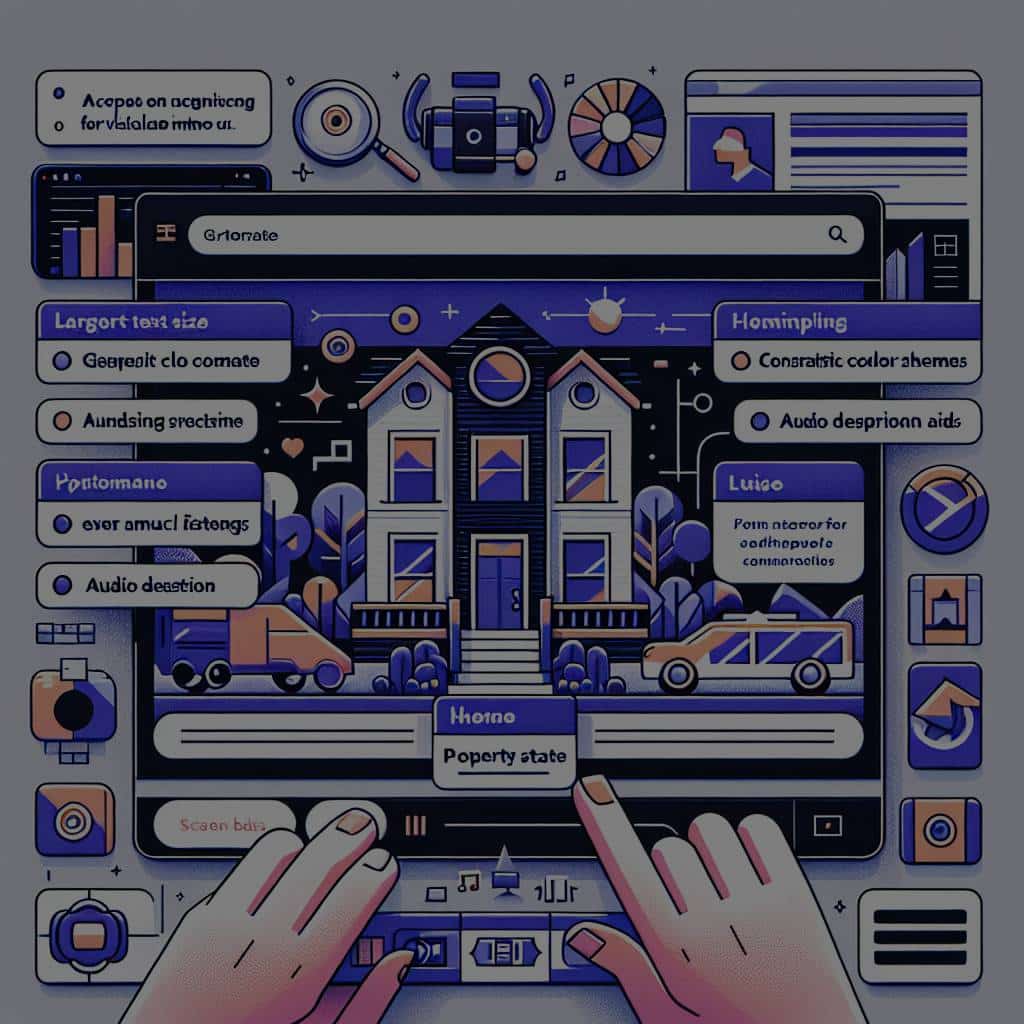What Are the Best Practices for Creating Accessible Real Estate Websites for Visually Impaired Users?

Creating a website that caters to all users, regardless of their abilities, is not only ethically appropriate but also legally required. The Americans with Disabilities Act (ADA) dictates that all public and commercial websites must be accessible to people with disabilities. The Web Content Accessibility Guidelines (WCAG) also provide a detailed framework for making web content more accessible.
In the world of real estate, websites have become an essential tool in property exploration and purchasing. However, people with visual impairments may struggle to navigate these websites due to the lack of accessibility features. This article will uncover best practices in creating accessible real estate websites for visually impaired users.
Topic to read : What Are the Latest Innovations in Earthquake-Resilient Construction for Real Estate?
Understanding Accessibility and its Importance in Web Design
Before we delve into the best practices, it’s essential to understand what web accessibility means and why it’s crucial. The term "accessibility" in web development involves creating sites that everyone, including individuals with disabilities, can access and use effectively.
People with visual impairments often utilize screen readers to interpret and read out the content of a webpage. Therefore, to be considered accessible, a website must be designed to be easily understood and navigated by these tools.
Also read : How to Use Predictive Analytics for Real Estate Portfolio Diversification?
Web accessibility is not only a social responsibility but also required by law under the ADA. Compliance with ADA regulations can help avoid lawsuits and increase your website’s user base by making it accessible to a broader range of people.
Implementing Accessible Color Schemes and Contrast
Visually impaired users may have difficulty distinguishing colors or seeing low-contrast text. Therefore, it’s vital to incorporate accessible color schemes and high-contrast text when designing real estate websites.
The WCAG recommends a contrast ratio of at least 4.5:1 for standard text and 3:1 for large text. Tools like the WebAIM Contrast Checker can aid in verifying whether your website meets these standards.
Furthermore, never rely solely on color to convey information. For example, instead of using just color to distinguish between visited and non-visited links, you could also use different styles or symbols.
Providing Alt Text for Images
Images play a key role in real estate websites, showcasing properties to potential clients. However, these images are often meaningless to screen readers without proper alt text.
Alt text, or alternative text, is a brief description of an image that screen readers can read aloud. When writing alt text, ensure it is relevant and descriptive but also concise.
For instance, instead of using "Image 1" as alt text for a picture of a house, a more appropriate alt text would be "3-bedroom house with a large backyard." This provides visually impaired users with a clearer understanding of the image content.
Ensuring Easy Navigation
As a rule of thumb, a user should be able to navigate your website without the use of a mouse. This is because visually impaired users often rely on keyboard navigation rather than a mouse.
To achieve this, all functionalities should be accessible via keyboard. This includes links, buttons, forms, and other interactive elements. Make sure the tab order follows a logical sequence, typically from left to right and top to bottom.
Another helpful navigation tool is a "skip to content" link. This allows users to bypass navigation menus and jump directly to the main content, making browsing more efficient for screen reader users.
Designing with Simplicity and Consistency
A cluttered and inconsistent layout can be confusing for visually impaired users who rely on screen readers. Therefore, simplicity and consistency should be key considerations in your website design.
Strive for a clean, uncluttered design with clear, simple language. Avoid using jargon or complex terms that could confuse users. Instead, use everyday language that is easily understood.
Maintain consistency in your design elements across your website. For example, keep menus in the same place on every page and use the same labels for similar content. This helps users form a mental model of your website, making it easier to navigate.
Remember, an accessible website does more than just comply with the ADA or WCAG. It also demonstrates your commitment to inclusivity, reaching a broader audience, and enhancing the overall user experience on your site. By following these best practices, you can create a real estate website that is accessible and welcoming to all users.
Implementing Responsive Design for Screen Readers
In the realm of web accessibility, responsive design plays a crucial role. It refers to the design approach that ensures a website’s layout adapts according to the size and orientation of the user’s device. This feature is pivotal for visually impaired users who rely on screen readers.
Screen readers convert digital text into synthesized speech, allowing users with visual impairments to understand the content on a webpage. However, these tools can only be effective if the website’s layout adapts responsively to accommodate the users’ needs.
In responsive design, priority should be given to the ordering of content. Elements should be set up to appear in a logical order when read aloud by a screen reader. For example, navigational menus should be positioned at the beginning, followed by the primary content, and then any supplementary information or links.
Moreover, it is also advisable to ensure that dynamic content updates are accessible. Visually impaired users might not notice changes on the screen triggered by actions like form submissions or button clicks. A well-implemented responsive design would make these updates recognizable to screen readers, delivering an enhanced user experience.
Lastly, avoid using tables for layout purposes as they can cause confusion for screen reader users. Tables should only be used for presenting tabular data and should include proper headers to guide users through the information.
By ensuring your real estate website has a responsive design, you not only facilitate a better user experience for visually impaired users but also improve the website’s overall accessibility and usability for all visitors.
Offering Transcripts and Captions for Multimedia Content
Multimedia content, including videos and audio clips, can enrich the content of real estate websites, providing potential clients with in-depth information about a property. However, such content is often inaccessible to users with visual or hearing impairments unless accompanied by transcripts or captions.
For any audio content, providing a text transcript is a fundamental accessibility standard. A transcript is a written version of the spoken words in an audio or video file. It allows screen readers to read aloud the content, making it accessible to visually impaired users. Notably, transcripts should also include descriptions of significant non-verbal sounds, like a door closing or a phone ringing, to provide a comprehensive understanding of the content.
In the case of videos, closed captions are a must. They provide a visual representation of the spoken content, enabling those with hearing impairments to follow along. Just like transcripts, captions should include significant non-verbal sounds.
Providing transcripts and captions not only ensures ADA compliance but also enhances the user experience by making your real estate website accessible to a more extensive user base.
Creating an accessible real estate website is certainly not a simple task, but by adhering to the best practices outlined in this article, you can efficiently navigate the process. Remember, web accessibility is not just about meeting legal requirements like ADA and WCAG compliance; it’s about creating an inclusive online space where everyone can gather information and complete tasks hassle-free.
By implementing accessible color schemes and contrast, providing precise alt text for images, ensuring easy navigation, designing with simplicity and consistency, implementing responsive design for screen readers, and offering transcripts and captions for multimedia content, you can make your real estate website a welcoming platform for all users, including those with visual impairments.
In doing so, you’re not only enhancing the user experience but also demonstrating your commitment to inclusivity, which can broaden your audience and stand as a testament to your business’s values. An accessible website is a win-win for everyone involved – your business, your users, and the real estate community as a whole.
